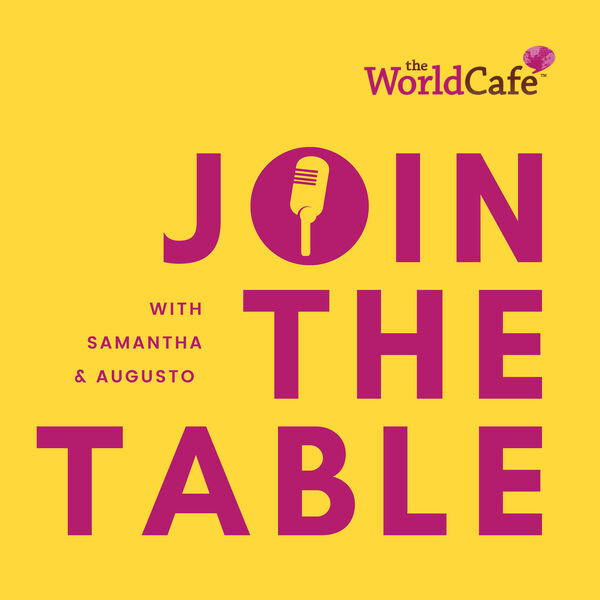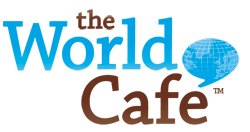 Hosting Global Climate Change Cafés means putting the basics of World Café to use for a specific purpose. The goal in most cases is to share ideas and motivate one another to take action such as lowering our own energy usage first, then encouraging others to do the same. In other cases action might mean approaching local businesses, government, schools and hospitals to encourage them to focus on energy efficiency and other green issues (such as using cleaning agents without harsh chemicals).
Hosting Global Climate Change Cafés means putting the basics of World Café to use for a specific purpose. The goal in most cases is to share ideas and motivate one another to take action such as lowering our own energy usage first, then encouraging others to do the same. In other cases action might mean approaching local businesses, government, schools and hospitals to encourage them to focus on energy efficiency and other green issues (such as using cleaning agents without harsh chemicals).
To begin: Send invitations via e mail and follow up with phone calls to encourage people to attend your Café. Here are two samples: 1 & 2, which you can also download from the ‘resources’ section on the right and fill in with your own details. Give thought to making the gathering diverse in cultural, racial, age and gender. Diversity can also mean people who hold a variety of positions in the company or community and people who are members of various groups.
You can create a Café atmosphere in any room where there is space to set up tables and can hold a Café for any number from 12 to 2,000. A typical room set up would include several tables for four, music for when people come in, a welcome poster, table cloths covered with paper, colorful pens, flowers and/or candles, and more. Here is a complete guide to help you with room set up.
As guests arrive they are greeted and asked to sit at tables with people they don’t know. The host(s) welcome everyone and then explain the basics of World Café and the context for the meeting. One way to set the context is to remind people that small groups, through peaceful coordinated action, have had enormous impact on social change in the past. A few examples can be given from history such as the Civil Rights Movement, the end of Apartheid, The Velvet Revolution, and The Women’s Movement.
Examples of changes already taking place can be given such as how once littering was common place, how smoking in public places was common, how much more recycling is happening now than a decade ago.
In some cases it is useful to point out that the actions we can take to impact Global Climate Change are necessary and good for the environment regardless of the cause of Global Warming.
The Café then moves to “Round One” where participants, seated at their tables of four, everyone in the room explores an question that is posed by the host. After 20 minutes or so the Café host interrupts and asks one person to remain at each table while the other three scatter to new tables. People then share what they heard at the first table, continue to explore the question while listening for patterns and themes. After three or more rounds the whole group engages in one conversation where anyone who wishes to briefly shares something they heard in the Café that is important to them. This “harvesting” is recorded visually on a mural of flip charts. When possible, enlist the help of a visual recorder who will use words and pictures to capture all that is shared.
The harvesting process makes clear to the whole what has been occurring at the various tables. There is no official report-out, but rather in an informal sharing by anyone who wishes to participate.
As a process, the World Café can evoke and make visible the collective intelligence of any group, thus increasing people’s capacity for effective action in pursuit of common aims. It is exciting to realize how much the group has generated by thinking together and exploring questions that are important to them.
Questions that work well for Global Climate Change include:
What are your hopes and fears regarding Global Warming?
What are you seeing that gives you hope regarding our response to Global Warming?
What is possible (regarding our response to global climate change)?
If you were assured of success, what would you do in response to Global Climate Change?
What might our lives look like if we changed enough to offset the threat of global climate change?
What might we have to give up and what is stopping us?
What can we do collectively and how do we begin?
Given our present technology and the scale of the challenges we face, what is now possible that was not possible before?
What do you feel called to do next?
Usually a Café event involves two or three questions, although it is possible to use one and go deeper into it throughout all three rounds. Often the same question is repeated and explored in greater depth for two rounds and then the final round poses a new question, one that leads to action steps.
More details on how to set up and host a World Café here.
You can also download an excellent World Café hosting guide by clicking on ‘Café to Go’.
Details on an event developed by David Gershon that includes a World Café followed by time for forming teams and making specific plans can be seen here.
After each Café you host share your ideas, experiences and the questions you used, along with any specific action items your group generated, by sending them to climatechange@theworldcafe.com and I will post them here so that we can all learn from each other. The Cafés can move from single events to a become a growing network in which insights build on one another and information flows.
TAKING ACTION a Café variation:
The last round of any Café can be set aside for the a 15-30 minute "first meeting" of a newly-formed action team.
A suggested list of questions can be provided at each table to facilitate the best use of limited time.
For example:
When we will next meet?
Where?
Who will host?
Who else can we think of to invite to join the team?
What questions do we have about how to measure our carbon reduction?
What research may be needed before we meet again?
Who agrees to do it?
You could also provide a sign up list at each table, with carbon copy. The carbon copy goes to the Café organizers so that they have a record of Café outcomes.
Who agrees to take the top copy home and email the contact info to all team members, along with a reminder about the upcoming meeting and assignments.
Who agrees to send a report to Nancy Margulies to post on the blog on behalf of the team, including a report about what just happened at the Cafe?
VARIATION:
"Passion Café".
Set up the Café as usual and number each table with a folded paper tent. Ask anyone who wants to (in a sentence or two) tell the group what they passionately want to discuss, with regard to global climate change.
Write the topics on a flip chart, numbering each one. After you have as many ideas as tables invite people to go to the table whose topic appeals to them most. If two or more topics are related, you can combine them for one table. If there are several people for one topic, they can break up into groups of four, using more tables.
People can stay at these tables for at least 30 minutes. You could have more than one round if time permits and, if not, go directly to a whole group discussion. Each table shares their insights and any plans they developed. Encourage one person to take the lead in following up on each idea and record the names of others who want to join the project.
Enjoy!



0 Comments